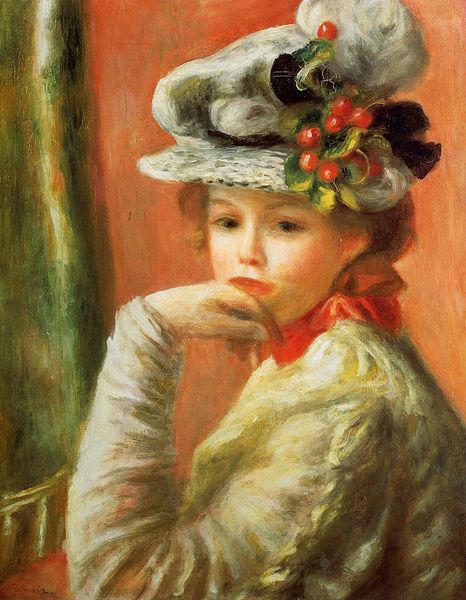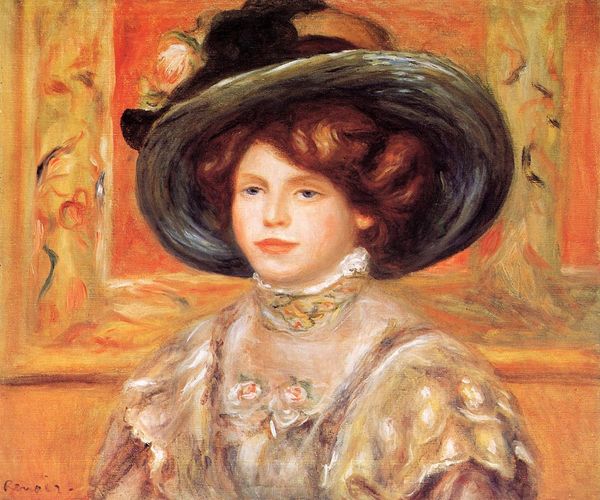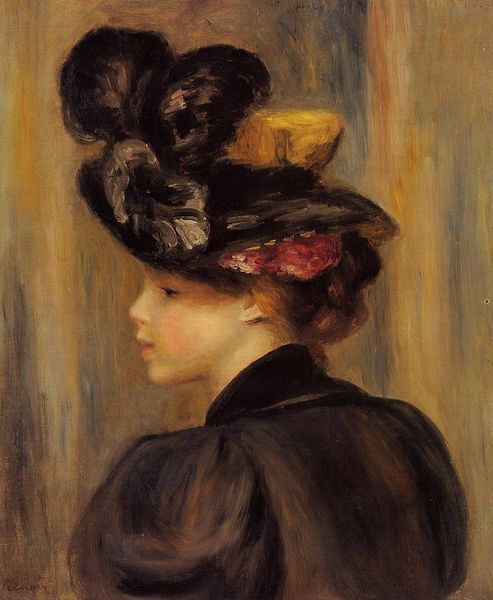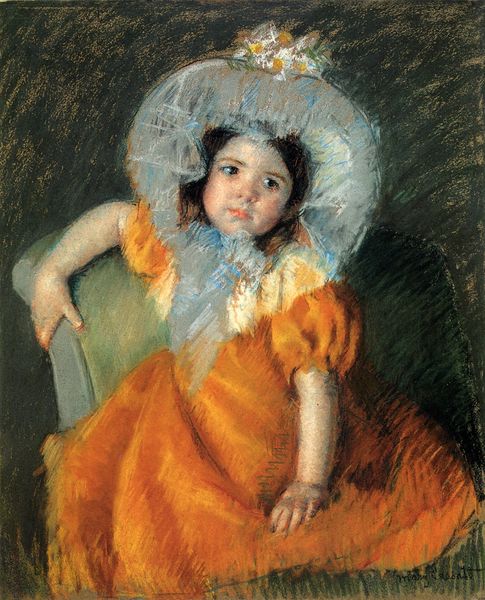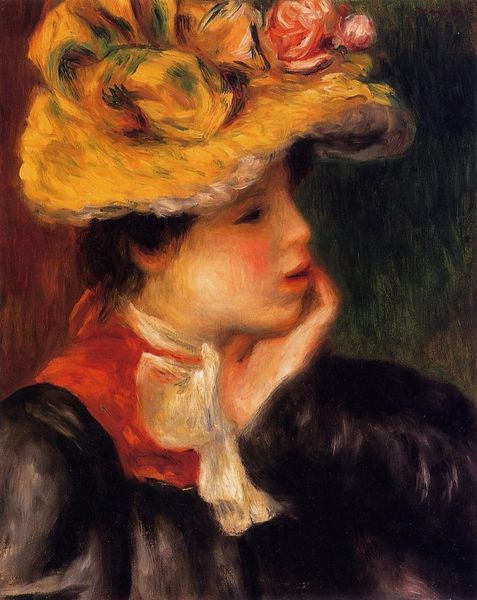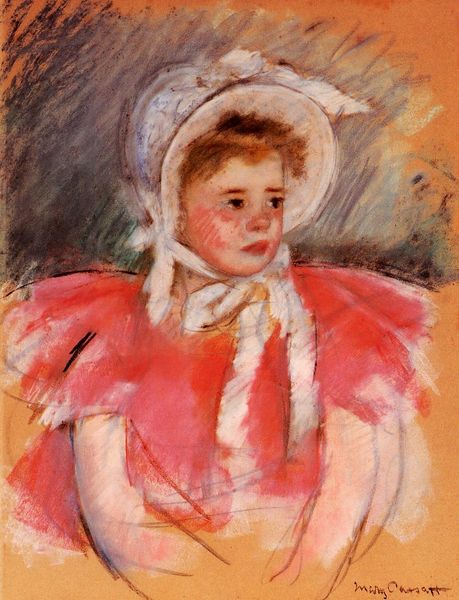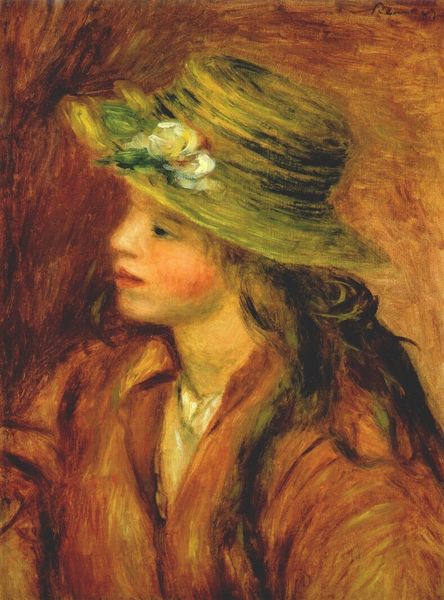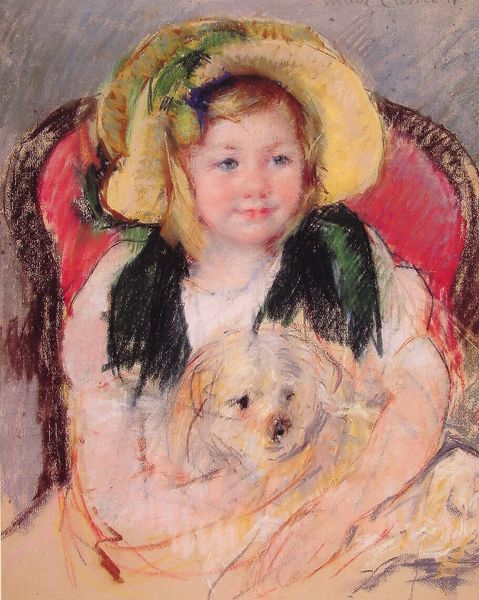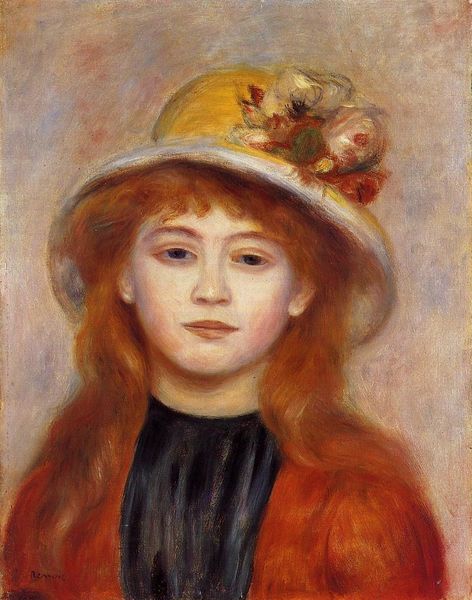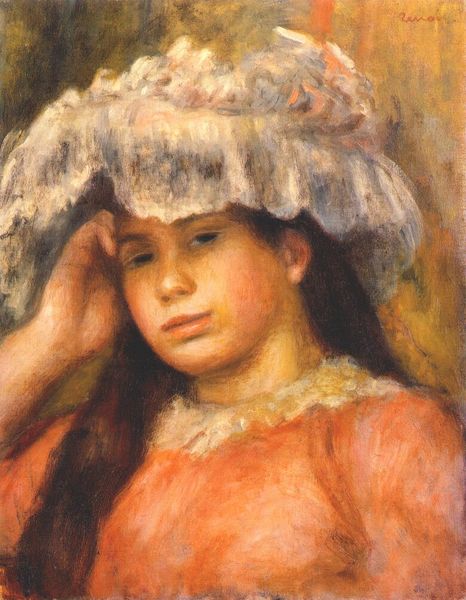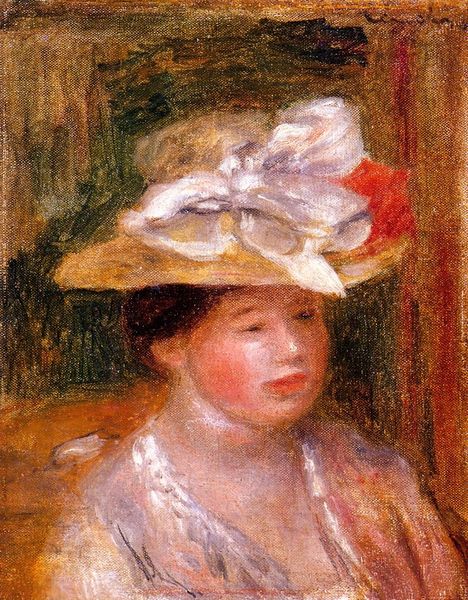
painting, oil-paint
#
portrait
#
16_19th-century
#
painting
#
impressionism
#
oil-paint
#
portrait reference
#
portrait head and shoulder
#
facial portrait
#
lady
#
portrait art
#
fine art portrait
Copyright: Public domain
Curator: Immediately, I’m struck by its delicate and almost ephemeral quality. It's such a light and airy piece. Editor: Indeed. What you’re observing is exemplified in Pierre-Auguste Renoir’s “Girl with a Pink and Black Hat,” created around 1890. The medium, of course, is oil on canvas. Curator: The brushwork is incredible! Note how the lines blend softly around the face, yet the hat is defined with distinct brushstrokes creating varied textures. The color choices – the pastels in her skin tones against the deep shades of the hat create depth. Editor: Yes, and this piece showcases Renoir’s interest in depicting modern women during the Belle Époque. Her extravagant hat serves as a marker of her social standing. Notice also the implications of class and consumer culture reflected by the very idea of leisurely portraiture in late 19th century Paris. Curator: The contrast extends beyond mere color, as Renoir uses light to almost sculpt the form, particularly the cheek and brow line. Also the turn of the head. What do you see reflected in that averted gaze? Is she observing or is she withdrawing? Editor: The averted gaze is standard practice in painting women to reinforce a trope of quiet introspection. Also, what about the gaze of the male artist upon his subject? Are we participating in that by viewing it? It asks questions about objectification in art. Curator: Possibly. I would argue Renoir’s primary interest lies in the visual interplay between form and light. In that respect, Renoir has deconstructed academic norms. She is also looking into a pictorial space of tonal harmony. The emotional component derives directly from his technique. Editor: And of course the technique—Impressionistic—is rooted in broader shifts in late nineteenth-century social conditions, class structures, and artistic autonomy in France, where one could choose what to depict and where to show it! Curator: A fascinating convergence, wouldn't you agree? Thank you. Editor: Certainly, the complexities inherent in its social framework certainly broaden our understanding. Thank you.
Comments
No comments
Be the first to comment and join the conversation on the ultimate creative platform.

